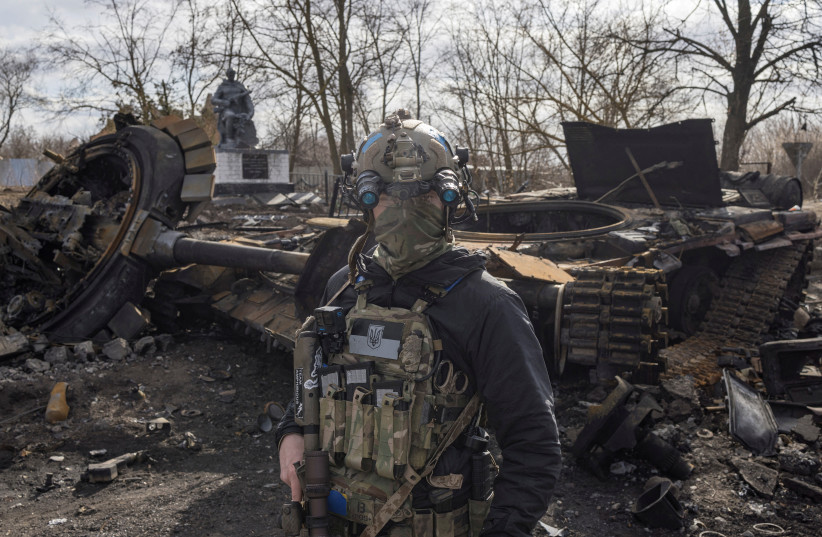A month into Russia’s devastating invasion of Ukraine, Israel’s military is surprised about what they are seeing.
Comparing it to “a war of the past,” senior military officers have said that while Russia has deployed a large number of troops to its neighboring country and a large number of military platforms, they have yet to make use of any of their advanced weaponry.
Over 12,000 Russian troops are said to have either been killed or injured so far and Ukraine claims to have destroyed at least 49 fighter jets, 81 helicopters, 335 tanks, 1,105 armored vehicles, 123 artillery systems and more.
Despite spending millions on its military, Russian forces have used a large amount of indirect fire and dumb bombs similar to those used in the 20th century fired from truck-mounted launchers instead of precision missiles against Ukrainian targets.
Due in part to poor weather and poor visibility, Russian planes and helicopters have needed to fly low to the ground in order to drop their munitions, placing them at risk of being hit by anti-aircraft systems or even shoulder-fired anti-tank guided missiles (ATGM) used en mass by Kyiv.
A month into the conflict, the IDF is surprised that the air over Ukraine is still contested. Despite far overpowering Ukraine’s air force even before the war, Moscow has been unable to gain any sort of aerial superiority with Ukrainian pilots still flying several sorties a day against their enemy.

They have also equipped only a small number of tanks with active defensive systems or even passive defense systems making them sitting ducks for the ATGMs.
Despite that Russia has claimed to have used its Kinzal hypersonic weapon against targets in the war in Ukraine, the Israeli military doubts that the video of the missile that was seen a week ago was actually filmed during the fighting.
The United States has also questioned the reported use of the Kinzal, with a senior defense official telling reporters last week that while they are unable to refute the claim, they were also unable to confirm it.
“It’s a bit of a head-scratcher, to be honest with you because it’s not exactly clear why, if it’s true, why would you need a hypersonic missile fired from not that far away to hit a building? It could be that they’re running low on precision-guided munitions and feel like they need to tap into that resource,” he said. “It could be that they’re trying to send a message to the west, but also to Ukraine, and trying to gain some leverage at the negotiating table. But from a military perspective, if it was a hypersonic missile there’s not a whole lot of practicality about it.”
Hypersonic missiles are able to fly five times the speed of sound and can deliver nuclear and conventional warheads that can potentially evade air defense systems.
Although Russian President Vladimir Putin has threatened to use nuclear weapons, the IDF does not believe that he would actually follow through with the threat.
Following the initial invasion in mid-February, the Israel Defense Forces set up teams to track and learn from the war.
The teams are gathering information and intelligence for the Israeli military in the fields of combat methods and doctrine, ground maneuvers, logistics, air defense, anti-tank, cyber and electronic warfare, psychological warfare and more.
